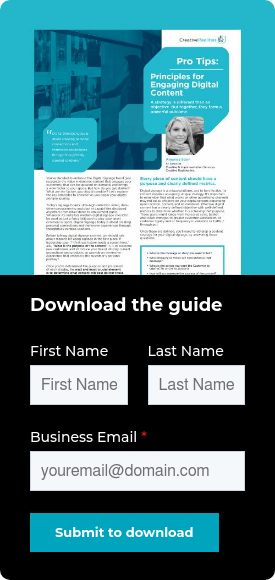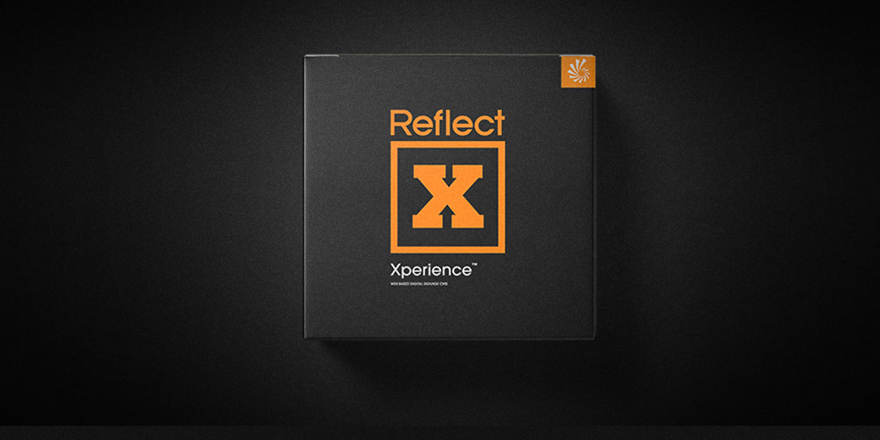Principles for Creating Engaging Digital Signage Content
A strategy is different than an objective. But together, they form a powerful outcome.
You’ve decided to embrace the Digital Signage trend, you recognize the value in dynamic content that engages your customers, that can be updated on demand, and brings a wow factor to your space. But how do you get started? What are the factors you should consider? Let’s explore the key principles to consider as you begin your digital signage journey.
Today’s signage boasts ultra-high-definition video, data-driven programming and playlist capabilities displayed anywhere from retail stores to amusement parks. Wherever it’s installed, modern digital signage shouldn’t be used as just a fancy billboard to play your latest commercial spots.
"Digital Signage today is about creating personal connections and immersive experiences through thoughtfully curated solutions.”
Before talking digital signage content strategy, we should talk about reasons for using signage in the first place. If leadership says, “I think each store needs a screen here,” ask, “What is the purpose of the screen?” Is it to welcome new customers and introduce your Brand, display current promotions and products, or provide an immersive experience that embraces the customer’s personal journey?
Once you’ve determined the purpose and placement of each display, the next and most crucial element is to determine what content will best deliver those objectives. That is where a thoughtful and purpose-built content strategy for your digital signage comes into play.
Every piece of content should have a purpose and clearly defined metrics.
Digital signage is a unique platform, and to be effective, its content requires an equally unique strategy. It’s important to remember that what works on other advertising channels may not be as effective on your digital screens depending upon location, context, and environment. Effective digital content has a clearly defined objective with well-defined metrics to determine whether it is achieving that purpose. Those goals might range from Increased sales, basket and ticket averages to greater customer satisfaction, or customer loyalty and or frequency in visitation or traffic / through put. Once these are defined, you’ll need to develop a content strategy for your digital signage, by answering these questions:
- What is the message or story you want to tell?
- What Imagery or Video will help enhance that message?
- What is the action you want the Customer to take? (CTA or Call to Action!)
- How will you measure the success of the content?
The answers will vary depending on what you are trying to achieve. Regardless, the content you create should be the manifestation of your strategy, and its effectiveness should be measured against the original goal.
For example, say your signage objective is to welcome new customers and introduce the brand. The content message and imagery could evoke the company’s history and brand essence, and your CTA could ask viewers to sign up for email specials or a rewards program — either of which can be easily measured. But don’t forget the difference between an objective and a strategy. An objective defines your goal which is in function of a marketing behavior, and a strategy is the path you choose to deliver it. In the above example this objective is a messaging strategy in disguise. So its definitely worthwhile to spend time thinking about what goals are measurable, and then what strategies are best fit to deliver those goals.
If your objective is to increase sales of promoted items, your messaging can focus on product benefits or promotional content. You can focus a larger percentage of the playlist toward offers to drive consumer behavior. In this case, the CTA could direct customers to try something new or upgrade to a better experience. You can measure this content’s effectiveness simply by comparing the products’ sales numbers before and after they were promoted.
Have a playlist strategy that best aligns toward — and serves — your objectives.
Is there a strategy to building the perfect content playlist? Absolutely, but the strategy you use should be fully dependent on your target goals and audience.
A playlist for amusement park visitors waiting in line for 45 minutes is very different from one for shoppers in a grocery store line. The type of content, length and how often it repeats are different, too. In the former, your objective is to take the visitors’ minds off protracted wait times, while also promoting concessions and other park offers. However, you don’t want it to feel like one long advertisement, nor do you want the visitor to tune out because the content repeats every few minutes.
In a grocery store, shoppers are usually in a hurry, so the content playlist can be much shorter and repeat more often. Depending on the sign’s position and objective, the playlist might feature more ads of the weekly specials, food preparation tips near the fresh produce or meat counters, or short clips to amuse shoppers in the checkout line.
The strategy behind a content playlist — its structure, length and mix — is as individual as the organization, its goals and its customers. You’ll need to decide the proper mix of content based on what each piece is meant to achieve. Are you trying to entertain? Inform? Promote? Cross-sell? The relative mix of each type of content in the playlist should correspond to those objectives.
Lastly, context is your ally when crafting content experiences that are meaningful, and on point in the moment. When is the best time to sell rain gear? When it’s raining. When is a great time to serve popcorn and soda? Right before you walk in to the movie theatre. If Content is King, then Context is Queen – and together, they are the power couple for any location-based digital signage experience.
It might seem backward, but NOW is when you decide on the hardware.
Despite the approach many Digital signage providers take, the decision on what kind of hardware should come at the end of your journey, not at the beginning. Deciding on hardware before clearly defining the purpose and type of content you intend to display often leads to frustration and further investments in both your time and money. Installing a gorgeous LED video wall with no content or budget to create 4K content will lead to a less than experience for your guests.
Knowing your goals when you engage a provider allows them to guide you to an experience that will execute your vision and exceed your goals.
The power behind transforming your digital signage starts with clarifying your business goals and devising a comprehensive content strategy. This approach ensures that your content is purposeful, engaging, and aligned with your overarching objectives. It’s not just about visually appealing images or videos – it’s about crafting content that serves a purpose and drives behavior that can be measured.
By establishing clear goals, understanding your target audience, selecting appropriate content, and continually refining your strategy based on measuring results, you can maximize the impact of your digital signage efforts.
Interested in understanding more about the power of data-driven design? Reach out to me at amanda.starr@cri.com for a sit-down, or please visit www.cri.com to explore our use cases on how we’ve solved content and design challenges across an array of verticals and categories.

Share this
You May Also Like
These Related Stories

Choosing Digital Signage Content Types to Suit Your Needs

Reflect Xperience: How to Make Local Content for Digital Signage Work for You

